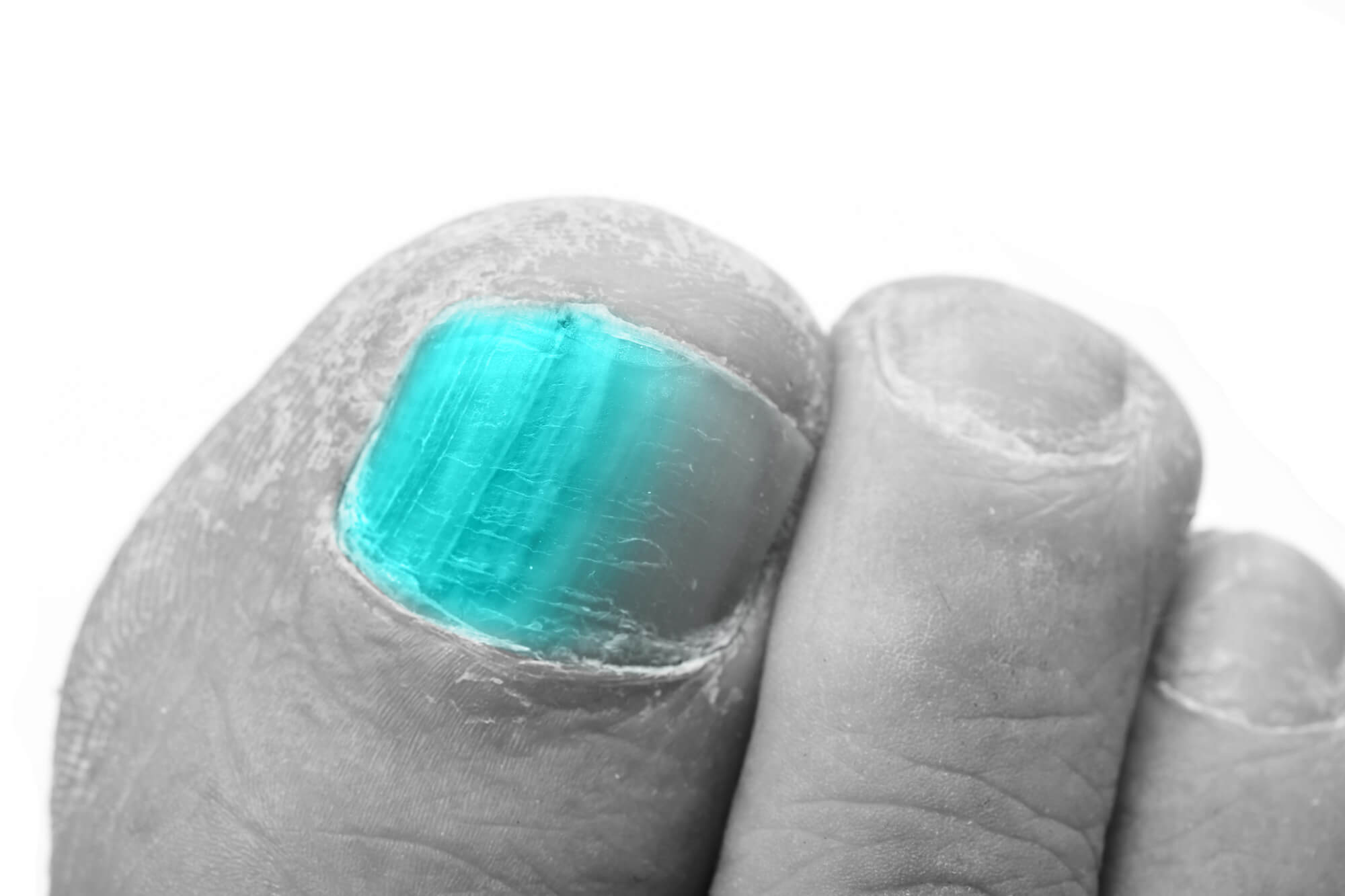Fungal Toenails

Medical terminology: onychomycosis
Nail fungus, also known as onychomycosis, is a common nail disease that affects 10-20% of the general population. It is also very difficult to treat due to the difficulty in killing the fungal spores that are found on top of the nail, within the nail and underneath the nail.
Nail fungus is characterized by multicoloured discolouration (yellow, white, green), toenails becoming crumbly, brittle, lifted and even an unpleasant odour. Most people become self conscious with the appearance of their fungal toenails which makes them search out for help.
Fungus can be found in dark, moist environments like our footwear. Nail fungus is very contagious and can easily spread from infected pedicure equipment to your toenails. It is very important you try to maintain dry, clean footwear as well as be mindful of the foot tools you are using.
It is very difficult that you seek professional treatment at the first signs of nail fungus due to how difficult it is to treat nail fungus. The thicker the toenail becomes, the more of the nail that is infected with nail fungus, the more aggressive treatment may be needed to eliminate the nail fungus.
How can you treat?
- Topical treatment - daily application of a prescription strength topical medicine PLUS professional debridement (filing) of affected toenails every 6-8 weeks to improve penetration of the medicine until the nail fungus is eliminated.
- Laser Treatment (Photodynamic Therapy) - after professional debridement of the affected toenails, a special dye solution is applied to stain the nail fungus, then a laser is applied at a specific wavelength/energy level to activate the dye solution. This creates a reaction that inhibits the fungal cells from growing and multiplying. This treatment is applied every 6-8 weeks until the nail fungus is eliminated. It is suggested to use a topical treatment at the same time to maximize effectiveness of overall treatment.
- Oral medication - your family doctor will prescribe an oral anti-fungal medicine that will help destroy nail fungus from the inside, out. This is the gold standard for nail fungus treatment and is the most effective method due to the nail cells receiving the anti-fungal medication and eliminating the nail fungus from the root. It is advised to take a blood test every month to monitor liver function. Oral medication needs to be taken until all of the nail fungus has grown out which could take up to 6-12months.
- Total nail removal - for aggressive cases of nail fungus or inability to take oral medication, surgical removal is an effective way to eliminate stubborn nail fungus. After applying a local anesthetic to numb the affected toe, the toenail is painlessly removed and the underlying fungal debris. An anti-fungal cream is applied to the nail bed 1-2 months after the procedure to eliminate any remaining nail fungus and the new toenail will grow in after 6-12 months.
Recommendation to prevent the issue:
- Avoid using pedicure tools that may be contaminated by fungus or were not properly sterilized.
- Allow footwear to complete dry before using again to avoid possible fungal growth inside of shoes.
- Avoid tight footwear, make sure your toes have enough room.
- Change your socks daily or multiple times per day if feet become wet.
- Use a shoe uv light sterilizer to reduce fungal spores in your footwear.
- Any signs of discolouration in nail go see your local foot specialist or family doctor.
